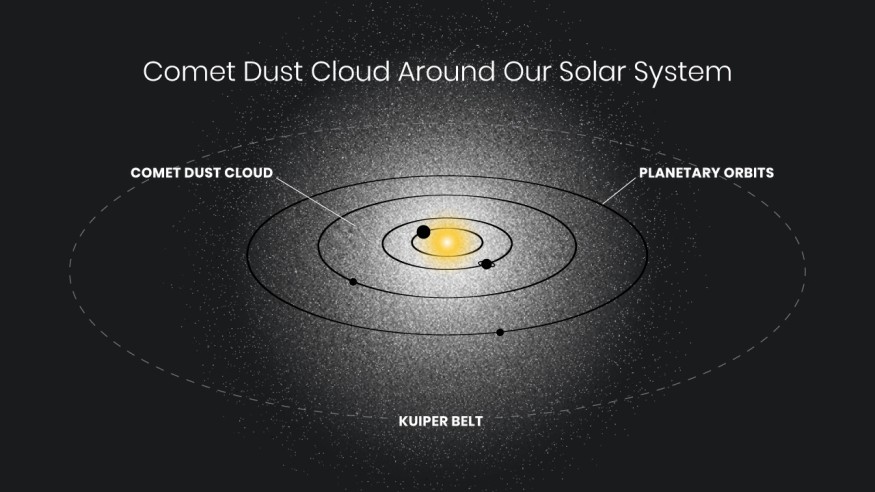Hubble Space Telescope captured a mysterious "ghostly glow" that is as bright as 10 fireflies surrounding the Solar System, as per NASA. The discovery was made as scientists were looking out to see how dark space can be while sifting through 200,000 images until they noticed a tiny excess of light prevailed.
They are unsure of its origin but hypothesize that it may be made up of dust from comets that reflected the sunlight since it persists to glow even when light from stars and planets is excluded. Researchers confirmed that the dust shell would be a new addition to the known architecture of the Solar System.

The Dust Outside the Solar System
According to Futurism, the discovery builds on research conducted last year when another group of astronomers used the interplanetary space probe New Horizon of NASA to measure the sky background.
New Horizon detected a mysterious glow around the Solar System, although scientists were not able to study its origin until now because the probe was more than four billion miles from the Sun. But since then, numerous theories tried to explain the phenomenon, which ranges from the decay of dark matter to a huge unseen population of remote galaxies.
Tim Carleton, an astronomer from Arizona State University (ASU), said in a statement that there could be another dust component between the Solar System and the distance where New Horizon conducted its measurements if their analysis is accurate. The discovery could shed more light on the unanswered questions regarding the structure of the Solar System.
Carleton added that the glow must be coming from within the limits of the Solar System given that the light appeared faint in the data of the New horizon due to its distance.
READ ALSO : What Is Coldest Place in the Solar System? How Does It Compare to the Freezing Temperature on Earth?
Is It a New Element?
Aside from those hypotheses, MailOnline reported that Carleton believes the ghostly glow could be a new element to the contents of the Solar System that has been talked about for many years but is only now being quantitatively measured, leading to Hubble's recent work.
Rogier Windhorst, a veteran Hubble astronomer also from ASU, explained that over 95% of the photons in the images from the archive file of Hubble come from distances less than 3 billion miles from Earth. Most Hubble users typically discarded those sky photons during their early days as they are interested in the faint discrete objects that the space telescope observes, such as stars and planets.
He added that the sky photons contain important information that can be extracted courtesy of the unique ability of the Hubble Space Telescope to measure faint brightness levels to high precision in the past three decades since it was deployed. Hubble is a joint project of NASA, ESA, and the Canadian Space Agency, which has been observing the universe for many over 30 years.
Since it was launched in April 1990 from the Kennedy Space Center in Florida, Hubble has taken more than 1.5 million observations of the universe leading to the publication of over 18,000 scientific papers.
RELATED ARTICLE : Hubble Space Telescope Spotted Stunning Star Cluster Nestled in Gigantic Cosmic Smokescreen 5,000 Light-Years From Earth
Check out more news and information on Space in Science Times.











